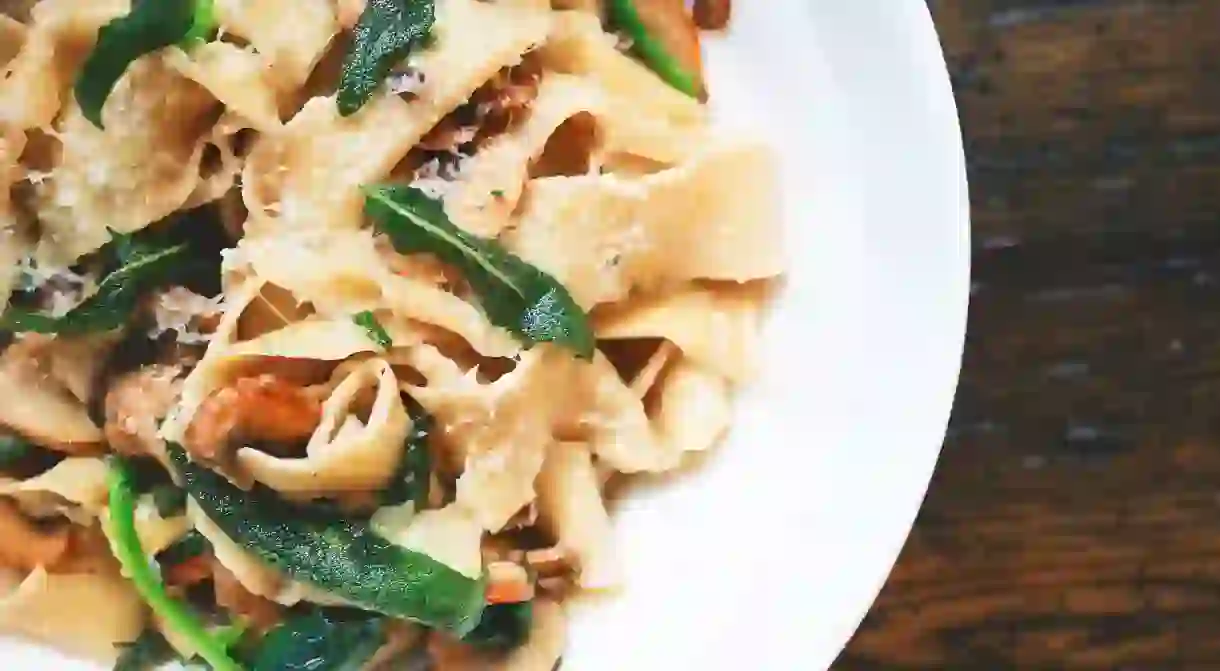A Guide to Tasting the Best Truffles in the South of France

Not to be confused with the chocolate kind, truffles are a fungi found under the soil in the French countryside, and a highly prized gourmet ingredient for chefs and foodies all over the world. Find out how they are grown, what they are used for and where to eat them in the South of France.
Don’t Confuse Chocolate Truffles With Fungi Truffles
Truffles mean different things to different chefs: pastry chefs will think about the chocolate kind, while other chefs will go gooey-eyed at the prospect of the fungal variety. Chocolate truffles were first created in France in the 19th century and were given their name because they looked like the mushroom truffle, which is a fungi, and looks rather ruffled and crumpled when it is found in the countryside. Chocolate truffles have a ganache centre, and are rolled into a ball, coated with chocolate and dusted with cocoa powder. So, not at all the same – but both are delicious!

Fungi Truffles Are Found Under the Ground
The word truffle comes from the Latin word for ‘lump’. Truffles are round and look rather like warts, and can be anything from the size of a walnut to a big fist. These fungi have a symbiotic relationship with trees, where they grow in the roots of mainly oak trees, but also hazel, beech and poplar trees. They can be found under the leaf litter throughout the year; different truffle species have different seasons, but most grow from September to May. The most common one is the black truffle, which is found in autumn. The Italian white truffle is more prized, but much less common.

Truffles Were Traditionally Found by Pigs and Now by Dogs
Truffles in France were traditionally hunted down by pigs. To female pigs, truffles smell like testosterone, so they are the best truffle hunters. Dogs are used today, as pigs would sometimes eat everything they found and ruin the truffle beds. The animal paws the ground when it has found a truffle, but more often it sniffs it out with its mouth and the tracker grabs it quickly. The dogs used in the south of France are usually not purebred dogs. They are chosen for their great capacity to smell the truffle (the fungi spores begin to smell strongly when it’s the right time for them to be harvested, and that is why animals are relied on more than humans to tell when they are ready to be picked). Once discovered, a portion of the truffle is put back into the ground so that it can repopulate the earth with fungal spores that will grow again the following year.

The South Of France Has Perfect Truffle-Growing Conditions
Truffle eating became popular in the Royal Court in the 18th century, but the truffles were very hard to cultivate. No one realised the relationship between their smell and when to harvest them, or their symbiosis with trees, until the 19th century. The south of France has sweet limestone soil and the necessary hot, dry climate in which truffles thrive, and huge tracts of land were planted for truffle cultivation. Most truffles are now cultivated. The Périgord region in southwest France is associated with truffles, as is the Luberon in inland Provence. In these places, traditional truffle hunting with animals and trackers is hugely popular.

Truffles Are Some of the Most Sought-After Foods in the World
Truffles are incredibly expensive, because of the intensive way in which they need to be harvested. The largest one in the world was found in 2014 in Italy and went to auction in New York, where Chinese bidders offered $1 million for it. As soon as they are taken out of the ground, truffles begin to evaporate water and become dry. For this reason, they’re sent to markets and restaurants immediately, adding to the high cost.

The Top Places to Go to Eat Amazing Truffles
If you are going to go anywhere for truffles, the undisputed place to go in the south of France is the restaurant Chez Bruno in Lorgues. It’s set in the countryside, halfway between Nice and Aix-en-Provence. This Michelin-starred restaurant incorporates truffles into every dish in some way. Menus start at €76 and stretch up to €193. In Carpentras, northeast of Avignon, you can head to Chez Serge, renowned for its Autumnal Truffle Bistrot, which is reasonably priced at €21 for a truffle omelette or starting at €69 for the truffle menu.













